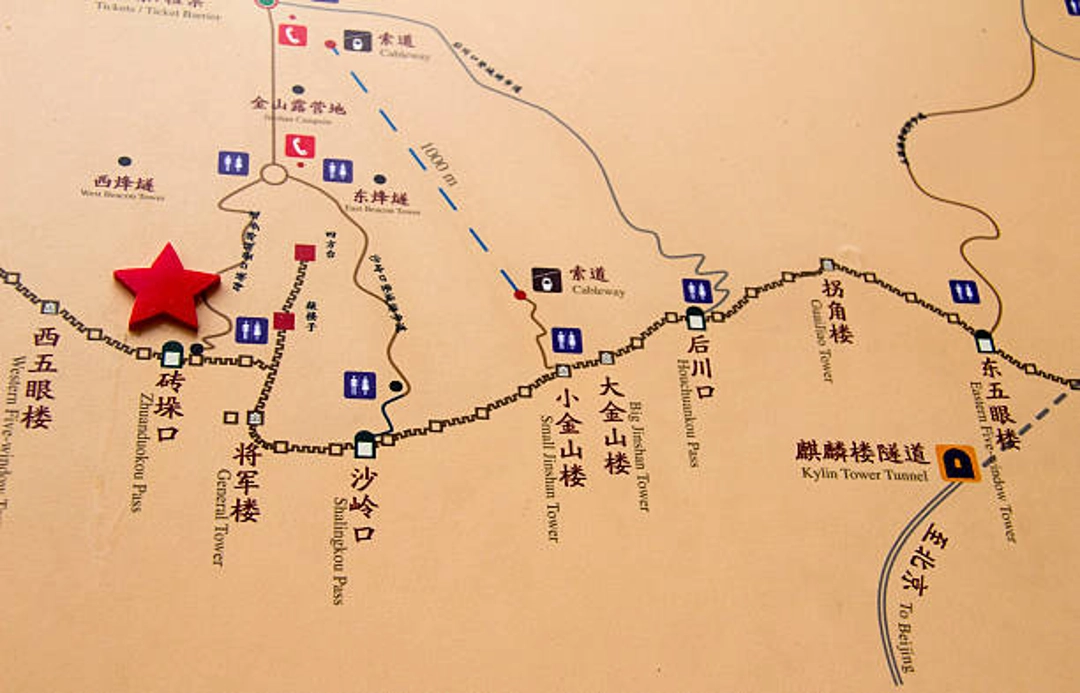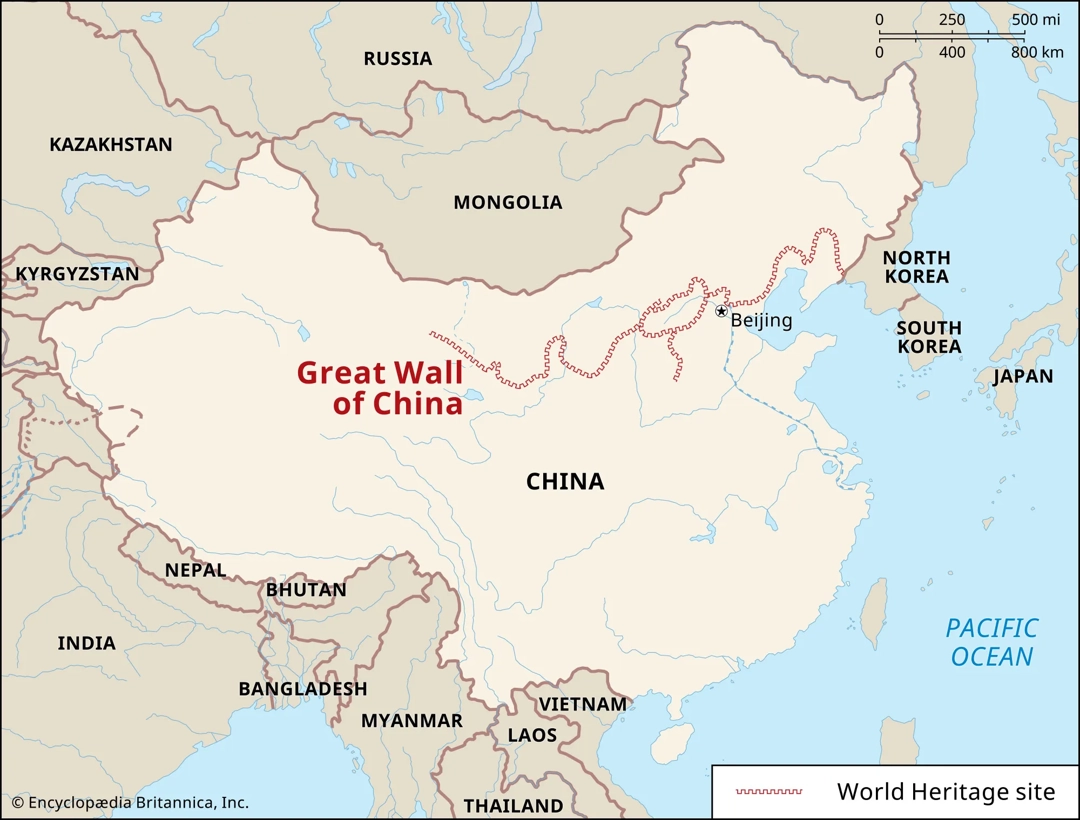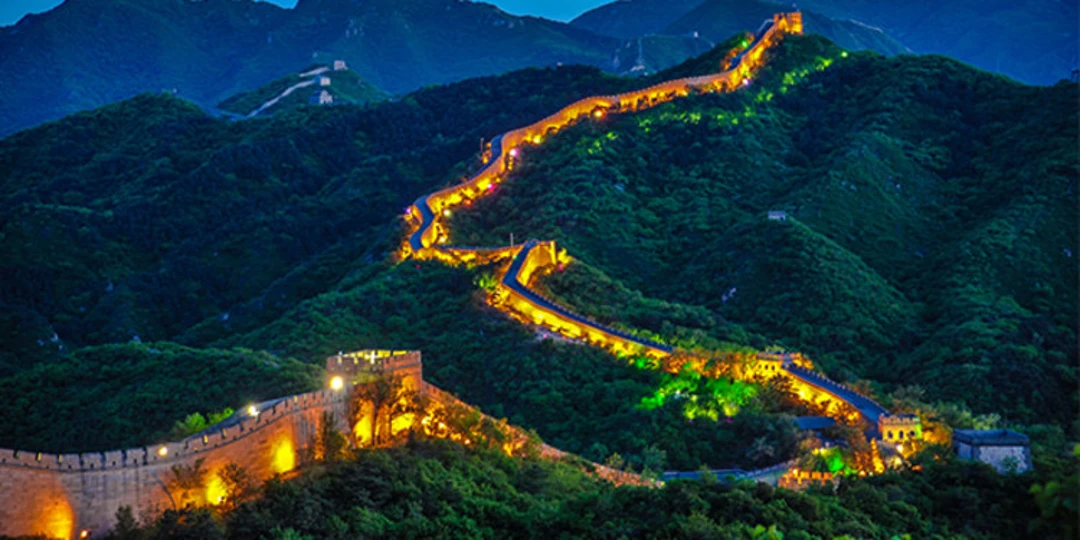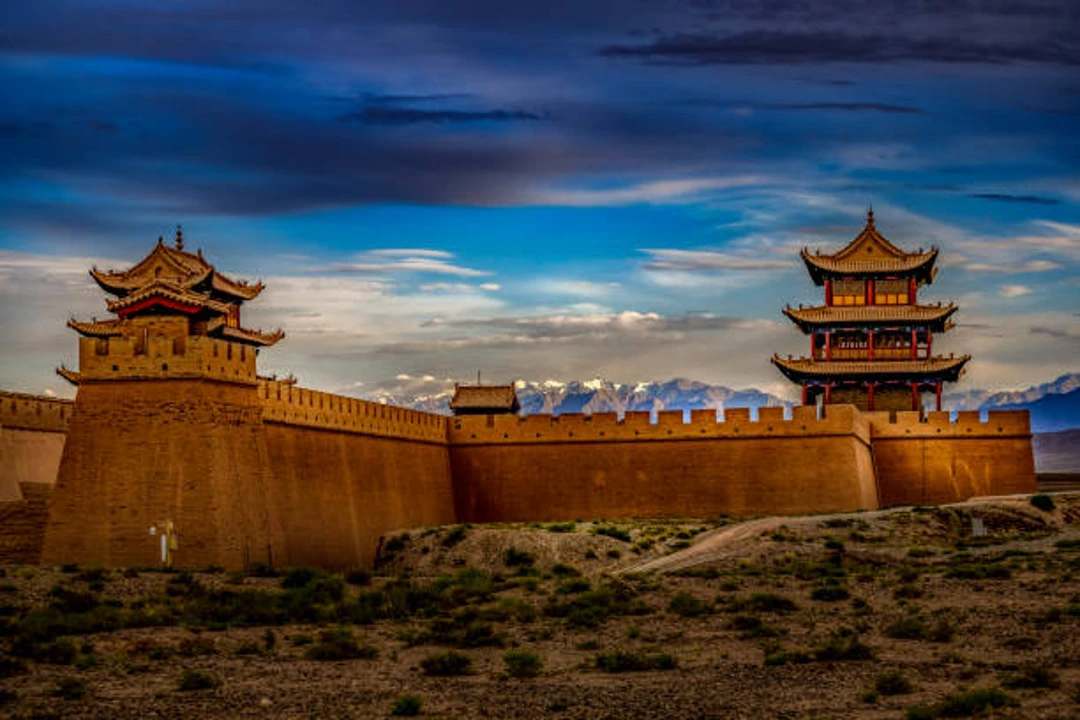The Great Wall of China is more than just a wall — it’s a remarkable testament to China’s historical might, cultural wealth, and lasting legacy.
For those heading to China, visiting the Great Wall in person is a bucket list item. But where does this vast structure actually go? Well before you tighten your laces to head out hiking, let’s take a look at it on the map.
This guide will help you trace the Great Wall across China, explore its most famous sections, and plan the perfect visit.

What is the Great Wall of China?
The Great Wall of China isn’t a single long continuous wall but a collection of walls constructed by various dynasties spanning centuries. It served as a fortification designed to prevent incursions and raids.
Can you believe that it extends a mind-boggling 13,000 miles? That’s almost if you were to cross the entire United States a few times over! It’s a popular legend that the structure is visible from space, though this isn’t exactly true. Still, that doesn’t make it any less impressive!
The wall is also a UNESCO World Heritage site.

But more than anything, it has come to symbolize China itself. It reminds all who visit of the country’s endurance and innovation. For centuries, the Wall has left onlookers and visitors completely awestruck and full of wonder.
The Great Wall is a proud representation of Chinese traditions, attracting people by the millions who want to climb her walls.
Where is the Great Wall of China on the Map?
The Great Wall of China meanders through the entire northern part of China, from the Bohai Sea in the east to the mountains of the Gobi Desert in the west. It’s not just one wall, either; it changes direction with the surrounding landscape.
On the way, it passes through several different provinces of China, notably Hebei, Beijing, and Tianjin, as well as small sections of Shanxi, Inner Mongolia, Ningxia, and Gansu.
It’s truly a giant stone dragon across the land, beckoning you to walk its ancient paths and discover its secrets.

Key Sections of the Great Wall You Can Visit
Badaling (Beijing)
Badaling is the most well-known and easiest-to-access section of the Great Wall. It’s super close to Beijing, so it’s very easy to visit, and, because of it, it’s the most popular.
The wall here has been well maintained, making it easy to imagine its original look and feel. If you just want a simple, hassle-free visit with great views, this is where to go.

Mutianyu (Beijing)
If you’re looking for something a little more scenic and less populated, head to Mutianyu. This section is famous for its stunning views and makes for great photo opportunities. Perfect for travelers seeking a less touristy hike.
They even have a toboggan you can ride back down which is a cool and unique way to end your visit!
Jinshanling to Simatai
This is the hiker’s favorite hiking section. The hike from Jinshanling to Simatai is one way to experience the wilder side of the Great Wall.
Some parts have been restored but the majority is unchanged and crumbling, providing a really rustic and authentic experience.
If you want to hike the Wall and feel isolated and as if you’re stepping back in time, this is a great section to do that on.
Jiayuguan Pass (Gansu Province)
The Great Wall ends in the west at Jiayuguan Pass. The pass is famous itself for being historically significant and is frequently referred to as the “First and Greatest Pass Under Heaven.”
It was built in such a remote location to serve as a gate to the Silk Road and remind approaching travelers of what China was capable of.
It’s really impressive to see the strategic and cultural significance of the Wall here. You feel like you’re in a history book.

Shanhaiguan (Hebei Province)
But have you ever seen the wall descend into the ocean? Visit Shanhaiguan! At the easternmost point of the Wall, it reaches the Bohai Sea and is known as the “Old Dragon’s Head.”
Here, you’ll be treated to epic views of the coast that are not to be missed and a whole lot of history lesson. It’s worth the visit in order to see the Wall meet the water and hear its tales.
FAQ
1. The Great Wall of China is how many years old?
The construction of the Wall dates back to the 7th century BC, though the well-known sections were mostlyRead More built during the Ming Dynasty (1368-1644).
2. Is the Great Wall wheelchair accessible?
Due to the steep stairs and uneven terrain, the Wall is not wheelchair-friendly, though certain sections may offer limited facilities (most notably Badaling).
3. How to I Map the Great Wall?
Most maps depict the Wall as a thick line weaving its way across northern China, from the Bohai Sea in the east to the desert of the Gobi in the west.
Conclusion
The Great Wall of China is not just a wall, but a marvel of ancient architecture and human endurance.
Whether you follow it on a map or hike it, every section has its own tale to tell.
So pinpoint some locations on the map, grab your spirit of exploration, and let the Wall lead the way to your next incredible Chinese travel destination.
